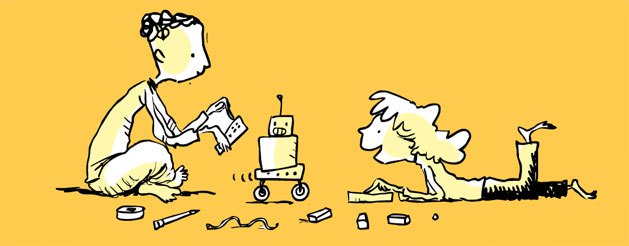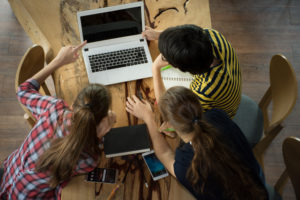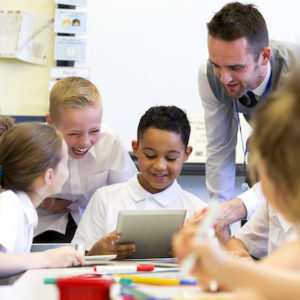
Should Calculators Be Allowed in Math Class?
Do they improve the classroom experience or interfere with learning? Here’s how to decide if calculators should be allowed in your math class.

I recently came across a posting on Doug Lemov’s field notes that expressed a common concern – technology overload among students. Mr. Lemov has had a powerful influence on contemporary education, and anyone in the field recognizes the contributions he has made to helping teachers and schools grow. I also agree with the overall sentiment of providing students time away from screens, though I see an alternate way to address this need. Here is a link to his post, along with my response:
I do agree that all of our lives (not just students) are “over-infused with technology,” though I come to a different conclusion about how to respond. We have twin crises in education: schools simply do not create an authentic reflection of the world outside of schools, and teacher-centered learning in a 30:1 analog environment simply is not efficient enough to meet the needs of students.
The work I have done with students and teachers in well-managed, technology-rich environments has produced results that no human teacher can achieve without technology. Most narrowly conceived, the idea of results refers to standardized test scores, but even when this definition is expanded to other indicators of success (reducing teacher prep time and student anxiety, helping students build social-emotional skills, etc). Digital technology is a tool – when used effectively, it creates efficiencies to support a wide range of goals.
Get the support you need to bring personalized learning to your school:
Enroll in “Differentiate Your Math Class with Khan Academy”
Watch this free video tutorial on Khan Academy Basics
Contact me to schedule a consultation
As for the need to “unplug,” students certainly need time away from devices, but to use that time to have students sit and write with paper and pencil begs the question, why not quill and parchment? Better yet, why not stone tablet and chisel? We tend to see the technology innovations that were present in our own childhood as permanent and immutable, but writing by hand is a dying art. In fact, typing may be gone in a decade as we rely increasingly on voice-recognition.
If students are to unplug, they should be playing, inventing, painting, collaborating, etc, etc. (Even collaboration can be made more effective with the use of technology tools). I have a personal weakness for paperback books, and technology has yet to provide a satisfactory alternative, so I still believe there is a good deal of value in time spent reading physical books.
Ultimately, the use of technology can help us do “old things more efficiently.” That can help create time in the instructional day to allow us and our students to innovate, play, and connect on a personal level. We should take advantage of this extra time, not to train students to use outmoded technologies and to pass standardized tests. Instead, we must engage their creativity and allow them to develop skills that they are interested in and will actually prove useful in their lives outside of school.
Share your experiences with technology overload among students, or ask a question by getting in touch.
(Thanks to thecreativeeducator.com for the featured image)

Do they improve the classroom experience or interfere with learning? Here’s how to decide if calculators should be allowed in your math class.

See the animated visual models my students made, and follow in my footsteps as I plan and facilitate a project-based math unit.

Collaboration and active learning are just two signs of a student-centered classroom. How many of these six signs are present in your classroom?